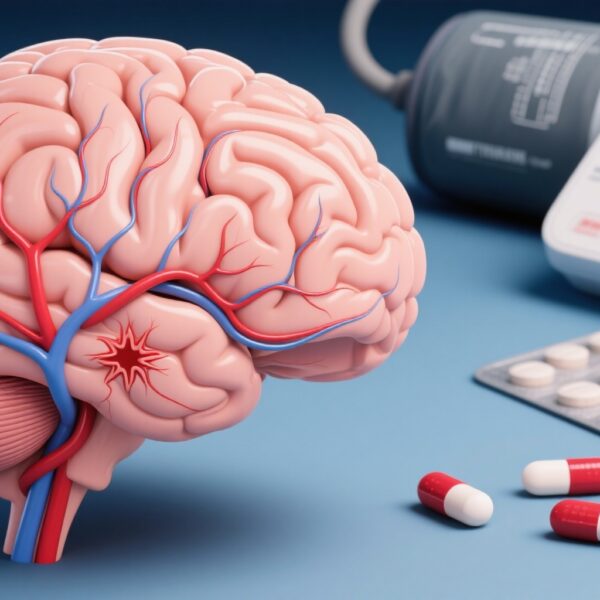Study Background and Disease Burden
Homonymous hemianopia, defined as the loss of half of the visual field in both eyes, is a common and debilitating visual impairment following stroke, affecting approximately 20-30% of stroke survivors. This condition severely impacts daily functioning, including mobility, reading, and the ability to perform instrumental activities of daily living, thereby diminishing quality of life. Currently, rehabilitation options for hemianopia include compensatory strategies such as visual scanning training (VST), which aims to train patients to scan toward the impaired visual field to compensate for loss. Despite its clinical use, high-quality evidence evaluating the efficacy of VST compared to placebo is lacking, leading to uncertainty about optimal rehabilitation strategies for these patients. The SEARCH (Scanning Eye trAining as a Rehabilitation Choice for Hemianopia after stroke) trial was specifically designed to rigorously assess the clinical effectiveness of VST versus sham training in patients with homonymous hemianopia after stroke.
Study Design
SEARCH was a prospective, multicentre, randomized controlled trial (RCT) involving 34 UK stroke units. It employed a parallel, two-arm, double-blind design ensuring both participants and the primary outcome assessor remained blinded to group allocation to minimize bias.
Eligible participants were adult stroke survivors (≥18 years) with clinically confirmed stable homonymous hemianopia, ranging from more than 4 weeks to less than 26 weeks post-stroke onset. Patients had to be able to engage with the training protocol and provide informed or proxy consent. A web-based randomization system stratified patients by type of hemianopia (partial or complete) into either the VST intervention group or the sham training control group.
Interventions consisted of VST or sham training administered for a minimum of 30 minutes daily, seven days per week, over six weeks, with follow-up assessments continued until 26 weeks post-baseline. The VST program included guided visual scanning exercises designed to improve compensatory eye movements toward the impaired field, whereas sham training provided non-specific visual tasks not targeting scanning strategies.
The primary endpoint was the change in vision-related quality of life measured by the National Eye Institute Visual Function Questionnaire 25 (NEI VFQ-25) from baseline to 26 weeks. Secondary outcomes included measures of functional ability (Nottingham Extended Activities of Daily Living – NEADL), health-related quality of life (EuroQoL EQ-5D-5L), questionnaire-based impact of visual impairment (Brain Injury-Related Visual Impairment-Impact Questionnaire), objective visual fields via the Esterman visual field program, visual scanning task performance, and adverse event monitoring.
Key Findings
A total of 161 patients were randomized (80 to VST and 81 to sham), with 158 included in intention-to-treat analyses after exclusion of those randomized in error or withdrawing consent. Both groups demonstrated high adherence to training regimens during the six-week intervention period, with approximately 72-73% undertaking training daily or most days. The VST and sham groups were comparable at baseline across demographic and clinical variables.
At 26 weeks, ANCOVA analysis adjusting for baseline NEI VFQ-25 scores and hemianopia type demonstrated no statistically significant difference between the VST and sham training groups in the primary outcome. The estimated adjusted mean difference between groups was -4.04 (95% CI: -9.45 to 1.36; p=0.141) in the primary analysis and -2.33 (95% CI: -7.42 to 2.75; p=0.365) in sensitivity analysis. Similarly, secondary outcomes measuring activities of daily living, quality of life, visual field function, and scanning performance showed no significant between-group differences.
Both groups showed improvements over time in primary and secondary outcomes, reflecting potential spontaneous recovery or nonspecific training effects. Reported adverse events were minimal and included transient eye strain, headache, and blurred vision in 20 participants, with no serious adverse events linked to the interventions.
Expert Commentary
The SEARCH trial represents one of the largest and most methodologically rigorous RCTs evaluating VST in post-stroke hemianopia rehabilitation. Its findings challenge the commonly held clinical assumption that VST confers distinct advantages over sham training in improving vision-related quality of life outcomes.
Several considerations merit emphasis. Firstly, the observed improvements in both groups raise the possibility of placebo effects related to additional clinician attention, information provision, and the structure of therapeutic engagement during the initial six weeks. These nonspecific factors may have contributed to functional gains irrespective of the specific intervention content.
Secondly, the sham training may have conferred some therapeutic benefit by maintaining participant engagement in visual tasks, underscoring the difficulty in designing truly inert control interventions in rehabilitation trials. This could dilute detectable differences between arms.
Thirdly, the heterogeneity of hemianopia severity and neuroplastic potential among participants might impact response to training, suggesting a need for individualized rehabilitation approaches or stratified analyses in future research.
Fourthly, given the natural recovery trajectory in subacute stroke survivors, timing of intervention initiation remains an important variable requiring further exploration.
Finally, limitations include attrition (37 withdrawals), reliance on self-reported outcome measures, and challenges in objectively quantifying functional visual improvements that translate meaningfully into everyday activities.
Conclusion
The SEARCH trial provides robust evidence that visual scanning training, as delivered in this study protocol, does not significantly outperform sham training in improving vision-related quality of life or functional outcomes among stroke survivors with homonymous hemianopia. Both training approaches were associated with improvements, possibly attributable to clinician interaction, placebo effects, or inherent recovery.
These findings highlight the complexity of designing effective rehabilitation interventions for visual field deficits post-stroke. They suggest that future research should focus on optimizing the content and delivery methods of training, examining individualized treatment effects, exploring adjunctive therapies, and unraveling the mechanisms driving observed nonspecific benefits.
Clinicians should consider that while VST remains a reasonable rehabilitation option, attention to structured patient support and information provision also plays a crucial role in recovery. Ongoing trials and meta-analyses will help refine evidence-based guidelines to improve outcomes for this common and impactful visual impairment after stroke.
References
Rowe FJ, Brayshaw E, Brown M, Chatterjee K, Drummond A, Hazelton C, et al. A randomized controlled trial of Scanning Eye trAining as a Rehabilitation Choice for Hemianopia after stroke (SEARCH). Int J Stroke. 2025 Oct;20(8):968-976. doi: 10.1177/17474930251330140. Epub 2025 Mar 13. PMID: 40083185; PMCID: PMC12446690.
Zihl J. Rehabilitation of Visual Disorders After Brain Injury. Hove: Psychology Press; 1995.
Pambakian AL, Kennard C. Can visual function be restored in patients with homonymous hemianopia? Br J Ophthalmol. 1997 Jul;81(7):324-8.
Pollock A, Hazelton C, Henderson CA, Angilley J, Dhillon B, Langhorne P, Livingstone K, Munro FA, Orr H, Rowe FJ. Interventions for visual field defects in patients with stroke. Cochrane Database Syst Rev. 2011 Oct 5;(10):CD008388. doi: 10.1002/14651858.CD008388.pub2. PMID: 21975758.
Pambakian ALM, Wooding DS, Kennard C. Scan training in patients with homonymous hemianopia. J Neurol Neurosurg Psychiatry. 2004 Sep;75(9):1520-4.



